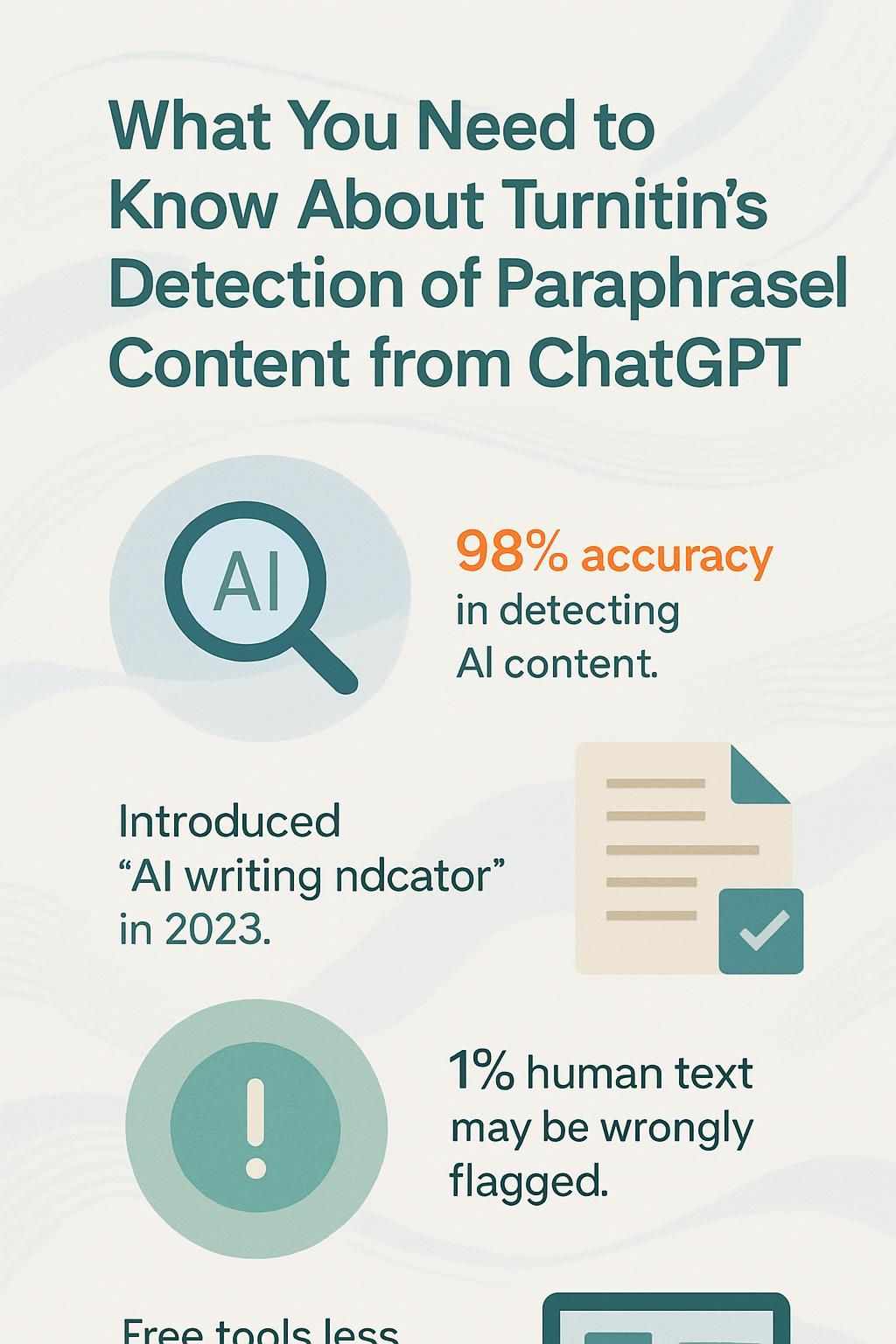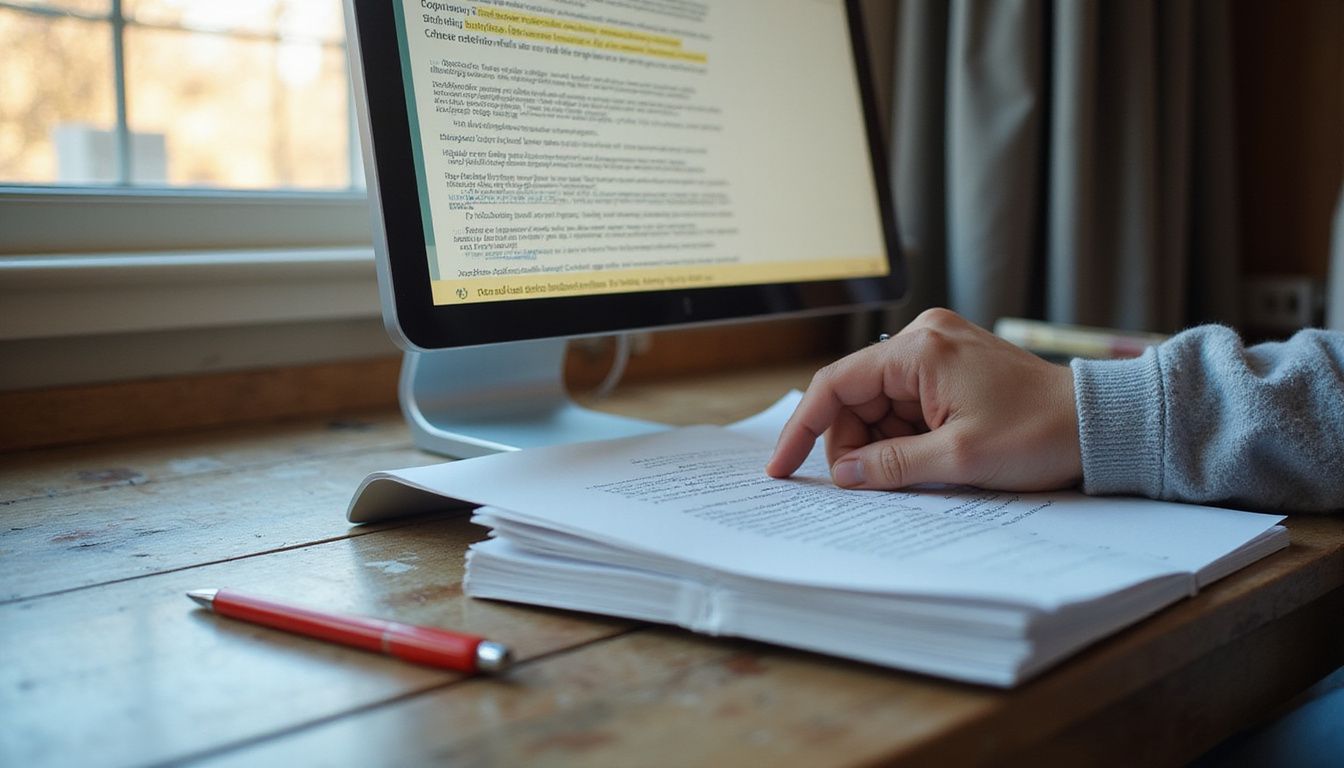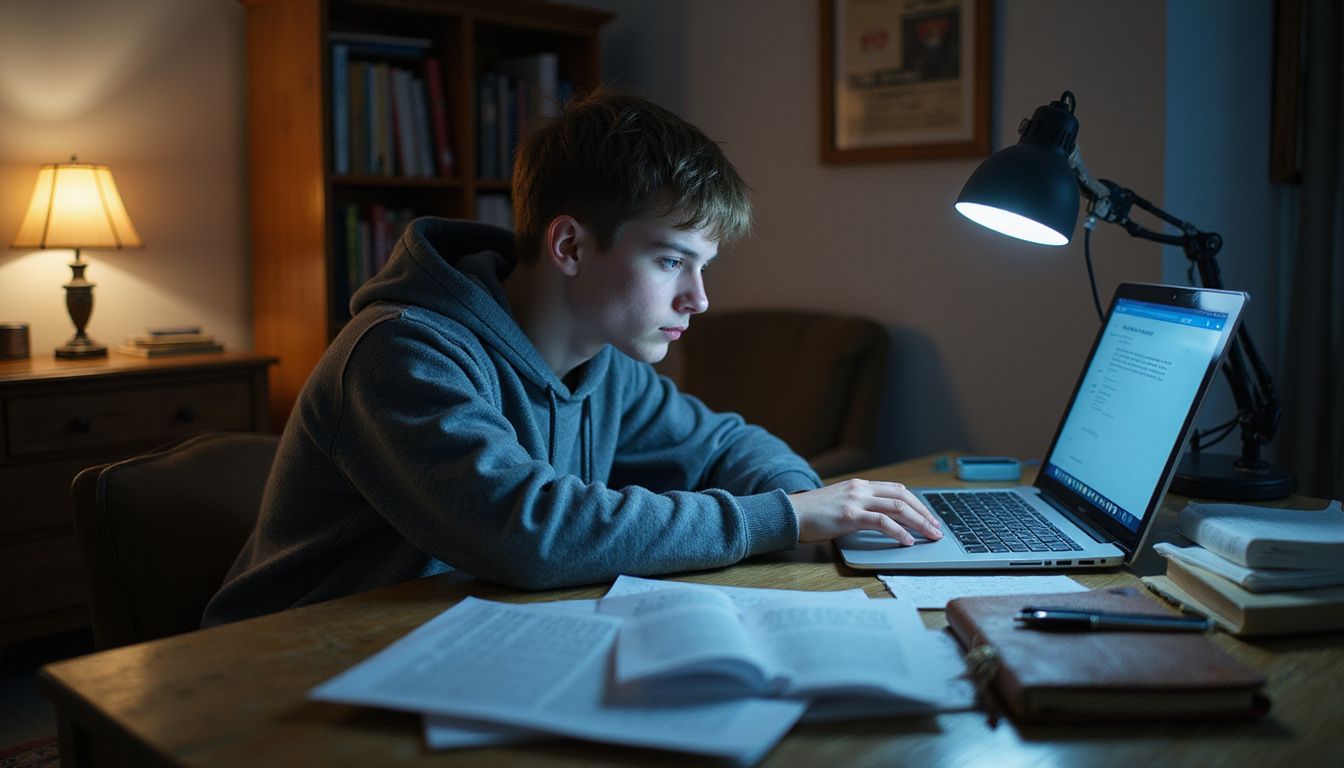Worried about how Turnitin handles content paraphrased using ChatGPT? Turnitin detection of paraphrased content ChatGPT relies on advanced AI to spot writing patterns typical of machine-generated text.
This blog will explain how it works, what it can and cannot do, and why it matters for students and educators. Keep reading to stay ahead of the curve!
Key Takeaways
- Turnitin uses advanced AI and machine learning to detect paraphrased or AI-generated content from tools like ChatGPT, with a claimed 98% accuracy.
- The system analyzes text patterns, sentence structures, and word choices; it flags sections using an “AI writing indicator” introduced in 2023.
- Its integration with the Similarity Report highlights overlaps and separates human-written text from AI-altered text using color coding.
- Turnitin has limitations: about 1% of human-written texts may be wrongly flagged, while some paraphrased AI content might avoid detection.
- Free detection tools exist but are less accurate than Turnitin; a study found seven out of eleven free tools misidentified AI-generated work as human-made in 2023.

How Turnitin Detects Paraphrased Content
Turnitin uses advanced machine learning models to spot patterns in writing. It compares sentence structures and semantic similarities to flag paraphrased content.
AI-powered detection tools
AI detection tools use machine learning to spot patterns in writing. They analyze text structure, word choice, and phrase flow using algorithms. Turnitin uses a transformer model to study word sequences and predict if AI generated the content.
This system examines probabilities across sentences, identifying linguistic patterns that are typical of ChatGPT or similar tools like GPT-3.5 Turbo.
The tool calculates an “average document score,” which shows how likely the text is machine-written. It flags sections with high similarity scores on its AI writing indicator introduced in 2023.
By spotting repeated syntactic elements or unnatural phrasing, it pinpoints paraphrased AI-generated content efficiently. Moving forward, combining these indicators with a Similarity Report improves accuracy further for academic integrity efforts.
Integration with the Similarity Report
Turnitin’s AI paraphrasing detection works directly with the Similarity Report. This report highlights matching text and shows how much of the content overlaps with other sources.
It also pinpoints where modified AI-generated text appears in an academic paper.
The tool uses color-coding to separate human writing, AI-based content, and paraphrased sections tied to generative AI like ChatGPT or Bard. Turnitin users who activate the AI writing detection feature gain access to this automatically.
This makes spotting phrases altered by tools such as text spinners faster and simpler for educators ensuring strong plagiarism detection systems without extra effort.
“Color coding helps make complex problems easier,” says one educator using Turnitin.
Can Turnitin Detect ChatGPT Content?
Turnitin can spot patterns in text that hint at AI-generated writing, including ChatGPT. Its tools look for unusual phrasing and repetition often linked to machine-produced content.
Paraphrased text vs. original AI-generated content
AI-generated content often has predictable patterns. Paraphrasing tools, like ChatGPT, tweak this text to sound different but keep the same meaning. Turnitin’s detection system spots these edits by analyzing writing style and sentence structures for common AI traits.
Its AI-powered algorithms can differentiate between heavily reworded content and original human writing.
The AI Writing Report helps highlight suspicious sections with color codes. This makes it easy for educators to see where paraphrased AI text might be hiding. With a claimed 98% accuracy rate, their system is designed to flag both straightforward ChatGPT outputs and modified versions crafted through paraphrasing or other methods like text spinners.
Limitations of detection accuracy
Turnitin’s detection accuracy isn’t foolproof. About 1 in 100 human-written texts might get wrongly flagged as AI-generated, which means a false positive rate of around 1%. Short essays or structured formats like bullet points and tables often confuse the system, making it less reliable for these types of content.
Some AI-written content also slips through the cracks. For example, if Turnitin flags 50% of an essay as AI-generated, the true number could be closer to 65%. Its tools sometimes underestimate how much artificial intelligence contributes to the text.
These gaps show why relying solely on detection tools can lead to mistakes in identifying plagiarism accurately.
Strategies to Avoid AI Detection
Changing AI-written text might seem easy, but tools like Turnitin have sharp eyes. Relying on tricks to bypass detection can backfire big time.
Risks of masking paraphrased content
Hiding paraphrased content with tools like text spinners can backfire. Turnitin’s AI detection may still flag such altered work, increasing the chance of a false positive rate. Complex algorithms and machine learning help catch patterns that seem unnatural or forced.
This poses problems for academic integrity and might cause honest writers unnecessary stress.
Masking content doesn’t just risk exposure—it hurts your growth. Relying on shortcuts weakens critical thinking and creativity, which are key in academic writing. Educators see patterns too; sudden changes in style or grammar often raise probing questions about the source of information.
Efforts to bypass these systems only push institutions to strengthen plagiarism detection tools further, as seen since 2022 with generative AI advancements like ChatGPT dominating discussions on originality.
Ethical implications for students and educators
Using AI tools like ChatGPT to create paraphrased content blurs academic honesty. Tools like Turnitin aim to protect academic integrity, but temptation grows as generative AI tools become smarter.
Students who rely on AI risk losing critical thinking and original thought skills, which are vital for learning.
Educators face tough choices too. Detecting ai-generated content can feel like a cat-and-mouse game with cheating students. They must promote fair writing practices while staying updated on evolving technology like machine learning algorithms or text spinners.
Balancing trust in students while enforcing plagiarism detection is no small task today.
Free AI Detection Tools Like Turnitin
Free tools for AI detection can help spot generative AI content in writing. Unlike Turnitin, many of these tools lack advanced features, which might lead to errors. A 2023 study by Odri and Yun Yoon revealed that seven out of eleven tools wrongly flagged AI-generated text as human-written.
This highlights gaps in free options when compared to paid ones like Turnitin.
Some popular free detectors include Writer.com’s AI Content Detector and OpenAI’s moderation tool. These work well but may not match Turnitin’s accuracy or its integration with similarity reports.
Free versions often struggle with paraphrased text from large language models like ChatGPT, leading to a higher false positive rate.
The Impact of Turnitin’s AI Detection on Academic Integrity
Turnitin’s AI tools push students to focus on original thought and honest writing. This shift could challenge how schools handle generative AI like ChatGPT in classrooms.
Strengthening honest academic practices
Promoting honest academic practices starts with clear rules. Schools should create strong plagiarism guidelines and discuss them openly. This helps students know the value of original thought and proper citation styles.
AI tools like Turnitin highlight areas needing attention, helping educators guide learners toward ethical writing habits.
Misusing generative AI can weaken trust in education. Tools that detect AI-generated content act as a reminder to write authentically. They help prevent issues like paraphrased text hiding plagiarism.
By embracing these technologies, institutions support honesty while preparing students for college admissions or future careers where integrity matters most.
Challenges for AI technology in education
AI tools often misunderstand short answers or specific formats. This can lead to errors, like marking a student’s work as AI-generated even if it isn’t. For instance, Turnitin has a false positive rate that worries many educators and students.
English Language Learners (ELL) face extra hurdles too. Their unique phrasing might be flagged unfairly by these systems.
The rise of generative AI makes detection harder every day. Tools like ChatGPT are improving fast, making paraphrased content tougher to catch. Scholars caution against an “arms race” between AI writing tools and detectors, which started gaining ground in 2022.
Such technology may miss some plagiarism while flagging innocent work, leaving gaps in academic integrity efforts.
Conclusion
Turnitin’s detection tools are changing academic writing. They spot patterns in paraphrased and AI-generated content, like ChatGPT’s work. This keeps students honest but also poses challenges for short or unique formats.
Academic integrity matters more than shortcuts. Writing your own ideas? That’s the real win!
For more information on tools that can help identify AI-generated text, explore our list of free AI detection tools like Turnitin.




